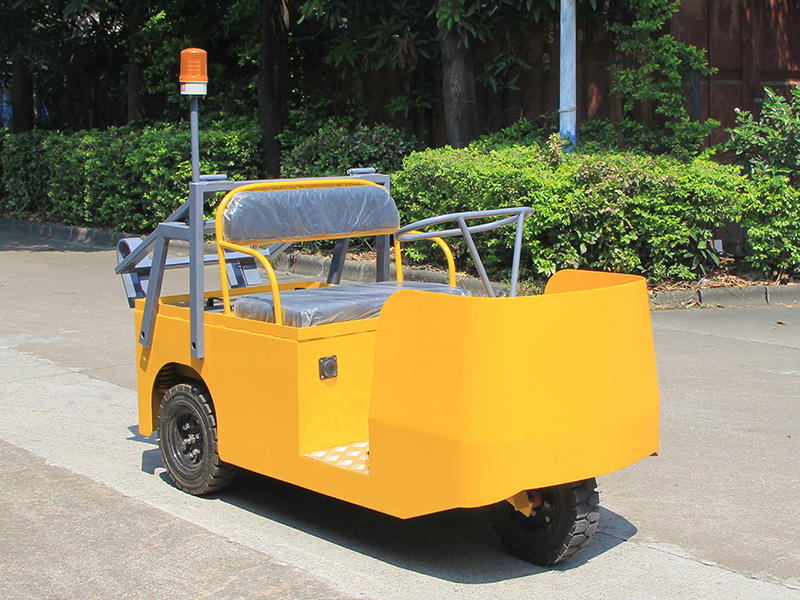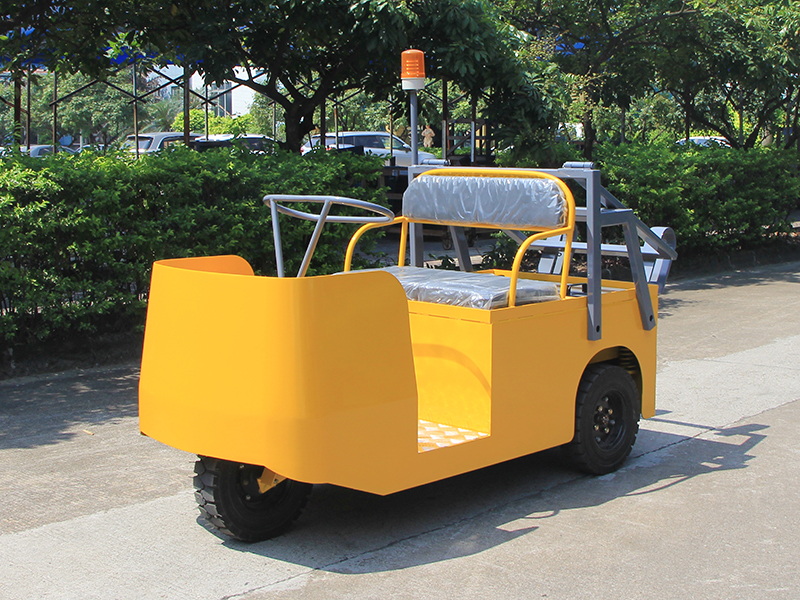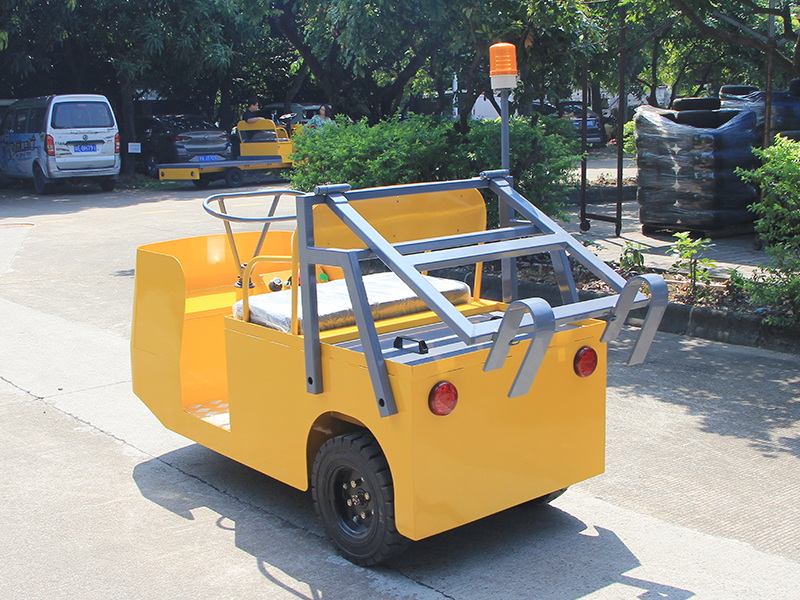Content Menu
● The Importance of Electric Towing Tractor Maintenance
● Operator Training: The Foundation of Effective Maintenance
>> Key Elements of Operator Training:
● Daily Inspection and Pre-Operation Checks
>> Visual Inspection
>> Battery and Electrical System
>> Tires and Wheels
>> Brakes and Steering
>> Safety Devices
>> Coupling Mechanism
● Scheduled Preventive Maintenance
>> Weekly Maintenance
>> Monthly Maintenance
>> Quarterly or 500-Hour Maintenance
>> Annual Maintenance
● Battery Care and Management
>> Best Practices for Battery Maintenance:
● Mechanical and Structural Maintenance
>> Key Areas of Focus:
● Electrical System Maintenance
>> Best Practices:
● Tire and Wheel Maintenance
>> Maintenance Tips:
● Advanced Maintenance Strategies
>> Predictive Maintenance
>> Fleet Management Integration
● Safety Precautions During Maintenance
● Cleaning and Storage
>> Cleaning Tips:
>> Storage Guidelines:
● Documentation and Record Keeping
>> What to Record:
>> Benefits:
● Common Mistakes to Avoid
● Sustainability and Environmental Considerations
● Sample Maintenance Schedule Table
● Conclusion
● FAQ
>> 1. How often should electric towing tractors be serviced?
>> 2. What are the most common maintenance issues with electric towing tractors?
>> 3. How can I extend the lifespan of my electric towing tractor's battery?
>> 4. What safety precautions should be taken during maintenance?
>> 5. Can I use non-original spare parts for repairs?
Electric towing tractors have become an integral part of modern logistics, manufacturing, and warehousing operations. Their efficiency, environmental friendliness, and reliability make them a preferred choice for material handling tasks. However, to ensure these machines continue to deliver optimal performance and safety, a comprehensive and proactive maintenance strategy is essential. This article explores the best practices for maintaining electric towing tractors, covering operator training, daily and scheduled inspections, battery care, mechanical upkeep, advanced maintenance strategies, and more.

The Importance of Electric Towing Tractor Maintenance
Electric towing tractors are significant investments for any business. Proper maintenance not only safeguards this investment but also ensures:
- Operator and workplace safety
- Reduced risk of unexpected breakdowns
- Consistent operational efficiency
- Lower long-term maintenance costs
- Extended equipment lifespan
- Compliance with safety and environmental regulations
Neglecting maintenance can lead to costly repairs, operational downtime, and even hazardous situations in the workplace. Therefore, implementing a structured maintenance program is not just recommended-it is essential.
Operator Training: The Foundation of Effective Maintenance
The first step in maintaining electric towing tractors is ensuring that all operators are thoroughly trained. Well-trained operators are more likely to detect early signs of wear or malfunction and can operate the tractors in a way that minimizes unnecessary strain on components.
Key Elements of Operator Training:
- Understanding the controls and dashboard indicators
- Daily inspection routines
- Safe operating practices (speed, turning, loading, and unloading)
- Emergency procedures
- Reporting protocols for faults or maintenance needs
Regular refresher courses and assessments help maintain high standards and keep operators up-to-date with the latest safety and maintenance procedures.
Daily Inspection and Pre-Operation Checks
A robust daily inspection routine is critical for catching potential issues before they escalate. Operators should perform the following checks before each shift:
Visual Inspection
- Check for visible damage, leaks, or loose parts.
- Inspect the chassis and frame for cracks, rust, or deformation.
- Ensure all safety decals and warning labels are legible.
Battery and Electrical System
- Confirm the battery is fully charged and securely connected.
- Inspect terminals for corrosion and cables for wear or fraying.
- For lead-acid batteries, check electrolyte levels and top up with distilled water if needed.
Tires and Wheels
- Inspect tires for cuts, punctures, and uneven wear.
- Check tire pressure and ensure wheels are securely fastened.
Brakes and Steering
- Test brake function for responsiveness and absence of unusual noises.
- Check steering for smooth operation and no excessive play.
Safety Devices
- Ensure emergency stop switches, horns, lights, and warning beacons are functional.
- Inspect mirrors and cameras (if equipped) for cleanliness and proper adjustment.
Coupling Mechanism
- Examine the tow hitch, coupling, and safety chains for wear or damage.
- Ensure all locking mechanisms operate smoothly and securely.
Scheduled Preventive Maintenance
While daily checks are crucial, scheduled preventive maintenance ensures the long-term health of your electric towing tractors. Adhering to the manufacturer's recommended schedule is essential, but a typical program includes:
Weekly Maintenance
- Lubricate moving parts such as steering bearings, pivot points, and couplings.
- Inspect and clean battery compartments and electrical housings.
- Check for software or firmware updates if the tractor has advanced electronics.
Monthly Maintenance
- Inspect and tighten all electrical connections.
- Check the condition of brake pads, discs, and hydraulic components.
- Test all safety features, including alarms, lights, and emergency systems.
Quarterly or 500-Hour Maintenance
- Conduct a comprehensive inspection of the gearbox, drive motor, and controller.
- Replace worn parts as needed, following the manufacturer's guidelines.
- Inspect and clean cooling fans, filters, and ventilation systems.
Annual Maintenance
- Perform a full system inspection and overhaul.
- Replace fluids (if applicable), check for frame alignment, and conduct load testing.
- Review maintenance logs and update service records.

Battery Care and Management
The battery is the heart of an electric towing tractor. Proper care is vital for performance, safety, and longevity.
Best Practices for Battery Maintenance:
- Charging: Always follow the manufacturer's charging instructions. Avoid overcharging or deep discharging, as these can significantly reduce battery life.
- Cleaning: Keep battery terminals clean and free from corrosion. Use a mixture of baking soda and water for cleaning, and ensure all connections are tight.
- Electrolyte Levels: For lead-acid batteries, check electrolyte levels regularly and top up with distilled water as needed. Never use tap water.
- Equalization Charging: Periodically perform an equalization charge (if recommended) to balance cell voltages and prevent sulfation.
- Temperature Control: Store and charge batteries in a cool, dry, and well-ventilated area. High temperatures accelerate battery degradation.
- Inspection: Regularly inspect batteries for bulging, cracks, or leaks. Replace damaged batteries immediately.
Mechanical and Structural Maintenance
Maintaining the mechanical integrity of your electric towing tractor is crucial for both safety and performance.
Key Areas of Focus:
- Lubrication: Apply the correct type and amount of lubricant to all moving parts, including axles, steering mechanisms, and couplings.
- Fasteners: Periodically check and tighten all nuts, bolts, and fasteners to prevent loosening due to vibration.
- Suspension and Shock Absorbers: Inspect for wear, leaks, or damage, and replace components as necessary.
- Frame and Chassis: Look for signs of rust, cracks, or deformation, especially after any collision or heavy impact.
- Towing Attachments: Ensure all hitches, pins, and safety chains are in good condition and properly secured.
Electrical System Maintenance
Electric towing tractors rely on complex electrical systems for propulsion, control, and safety features.
Best Practices:
- Wiring: Inspect all wiring harnesses for signs of wear, abrasion, or loose connections.
- Fuses and Relays: Test and replace any blown fuses or faulty relays.
- Controllers: Ensure the electronic controller is free from dust and moisture. Update software as recommended by the manufacturer.
- Sensor Calibration: For advanced tractors, periodically calibrate sensors and check for error codes.
Tire and Wheel Maintenance
Tires are critical for safety, traction, and energy efficiency.
Maintenance Tips:
- Pressure: Maintain recommended tire pressure for optimal performance and safety.
- Tread Wear: Replace tires that show excessive or uneven wear.
- Alignment: Check wheel alignment to prevent premature tire wear and improve handling.
- Rotation: Rotate tires according to the manufacturer's schedule to ensure even wear.
Advanced Maintenance Strategies
As electric towing tractors become more sophisticated, integrating advanced maintenance strategies can further optimize performance and reduce costs.
Predictive Maintenance
- Telematics: Use telematics and onboard diagnostics to monitor real-time performance data, including battery health, motor temperature, and usage patterns.
- Condition Monitoring: Install sensors to track vibration, temperature, and load, enabling early detection of potential issues.
- Data Analysis: Analyze maintenance records and operational data to identify trends and schedule proactive servicing.
Fleet Management Integration
- Centralized Scheduling: Use fleet management software to schedule and track maintenance across multiple units.
- Automated Alerts: Set up automated alerts for maintenance milestones, battery replacements, and safety inspections.
- Performance Benchmarking: Compare performance metrics across your fleet to identify underperforming units or best practices.
Safety Precautions During Maintenance
Safety must always be the top priority during maintenance activities.
- Lockout/Tagout: Always disconnect the tractor from the power source before performing maintenance.
- Personal Protective Equipment (PPE): Wear gloves, safety glasses, and protective clothing.
- Proper Tools: Use only manufacturer-approved tools and equipment.
- Safe Lifting: Use appropriate jacks and supports when lifting the tractor. Never rely solely on a hydraulic jack.
- Fire Safety: Keep fire extinguishers nearby, especially when working with batteries or electrical systems.
- Work Area: Ensure the maintenance area is clean, dry, and free from obstructions.
Cleaning and Storage
Proper cleaning and storage help prevent corrosion, electrical faults, and mechanical wear.
Cleaning Tips:
- Exterior: Wipe down the exterior regularly to remove dust, dirt, and debris.
- Battery Compartment: Clean battery compartments to prevent acid buildup and corrosion.
- Electrical Components: Use dry compressed air to clean sensitive electrical parts.
- Underbody: Inspect and clean the underbody to prevent rust and buildup of debris.
Storage Guidelines:
- Location: Store tractors in a dry, well-ventilated area away from direct sunlight and extreme temperatures.
- Battery Storage: If storing for an extended period, charge batteries to about 50–70% and disconnect them.
- Security: Lock tractors and secure keys to prevent unauthorized use.
Documentation and Record Keeping
Maintaining accurate records is essential for tracking maintenance, identifying recurring issues, and ensuring warranty compliance.
What to Record:
- Maintenance Dates and Tasks: Log every inspection, repair, and part replacement.
- Operator Reports: Document any issues reported by operators.
- Parts Inventory: Track spare parts usage and reorder as necessary.
- Incident Reports: Record details of any accidents or unusual wear.
Benefits:
- Warranty Claims: Comprehensive records support warranty claims and reduce disputes.
- Regulatory Compliance: Maintenance logs may be required for safety audits or insurance purposes.
- Performance Analysis: Historical data helps identify trends and optimize maintenance schedules.
Common Mistakes to Avoid
- Skipping Daily Inspections: Even minor issues can escalate quickly if left unchecked.
- Improper Charging: Overcharging or deep discharging batteries significantly reduces their lifespan.
- Using Unauthorized Parts: Non-original parts may compromise safety and void warranties.
- Neglecting Software Updates: Outdated software can lead to performance issues or safety risks in modern tractors.
- Ignoring Warning Indicators: Dashboard alerts should never be ignored-address them promptly.
Sustainability and Environmental Considerations
Electric towing tractors are environmentally friendly, but maintenance practices can further enhance their sustainability.
- Battery Recycling: Recycle old batteries responsibly to prevent environmental contamination.
- Eco-Friendly Cleaning Products: Use biodegradable cleaners to minimize environmental impact.
- Energy Efficiency: Maintain tires and mechanical systems for optimal energy use, reducing overall carbon footprint.
Sample Maintenance Schedule Table
| Interval | Task |
| Daily | Visual check, battery, controls |
| Weekly | Tire pressure, brakes, lubrication |
| Monthly | Electrical connections, safety features |
| Quarterly | Gearbox, drive motor, controller |
| Annually | Full system inspection and overhaul |
Conclusion
Maintaining electric towing tractors is not just about keeping machines running-it's about ensuring safety, maximizing efficiency, and protecting your investment. By implementing comprehensive operator training, adhering to structured daily and scheduled maintenance routines, caring for batteries, and leveraging advanced fleet management tools, you can significantly extend the life of your equipment and minimize costly downtime. Remember, proactive maintenance is always more cost-effective than reactive repairs. Keep detailed records, use only approved parts, and stay updated with the latest best practices to ensure your electric towing tractors deliver reliable service for years to come.

FAQ
1. How often should electric towing tractors be serviced?
Most manufacturers recommend a combination of daily, weekly, monthly, and quarterly maintenance. A comprehensive service should be performed every 500 hours of operation or quarterly, with daily and weekly checks to ensure ongoing safety and reliability.
2. What are the most common maintenance issues with electric towing tractors?
The most common issues include battery degradation, worn tires, loose electrical connections, brake wear, and mechanical wear on couplings and steering components. Regular inspections and prompt repairs can prevent these from becoming serious problems.
3. How can I extend the lifespan of my electric towing tractor's battery?
Follow proper charging protocols, avoid deep discharges and overcharging, keep terminals clean, maintain correct electrolyte levels (for lead-acid batteries), and store batteries in a cool, dry place. Periodic equalization charging (if recommended) also helps.
4. What safety precautions should be taken during maintenance?
Always disconnect the power source, use appropriate PPE, ensure the tractor is on a stable surface, use proper lifting equipment, and never work alone when handling heavy parts. Follow the manufacturer's safety instructions closely.
5. Can I use non-original spare parts for repairs?
It is strongly advised to use only manufacturer-approved spare parts. Non-original parts may not meet safety or performance standards and can void warranties or cause further damage.










































